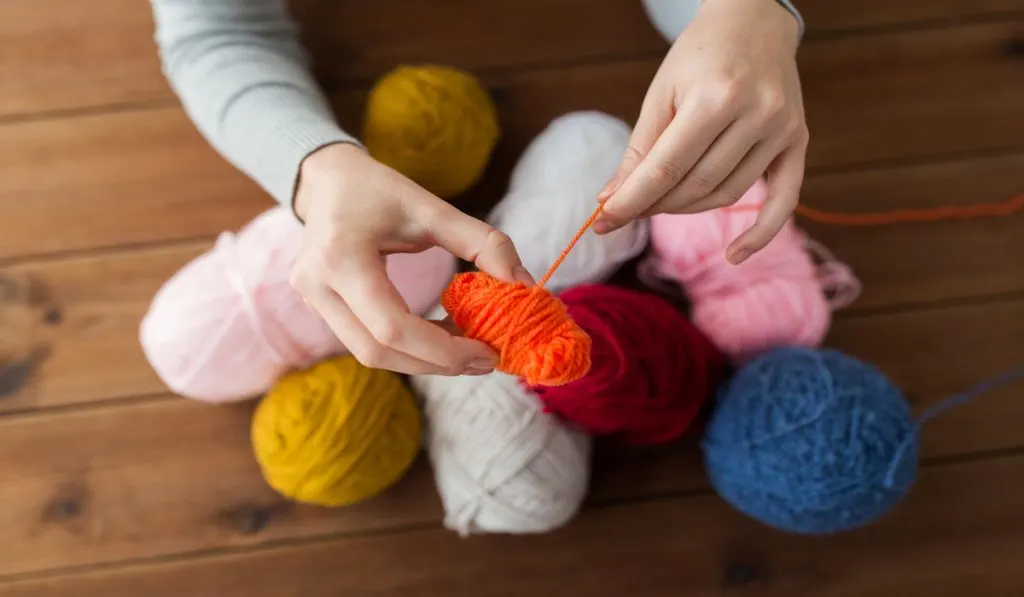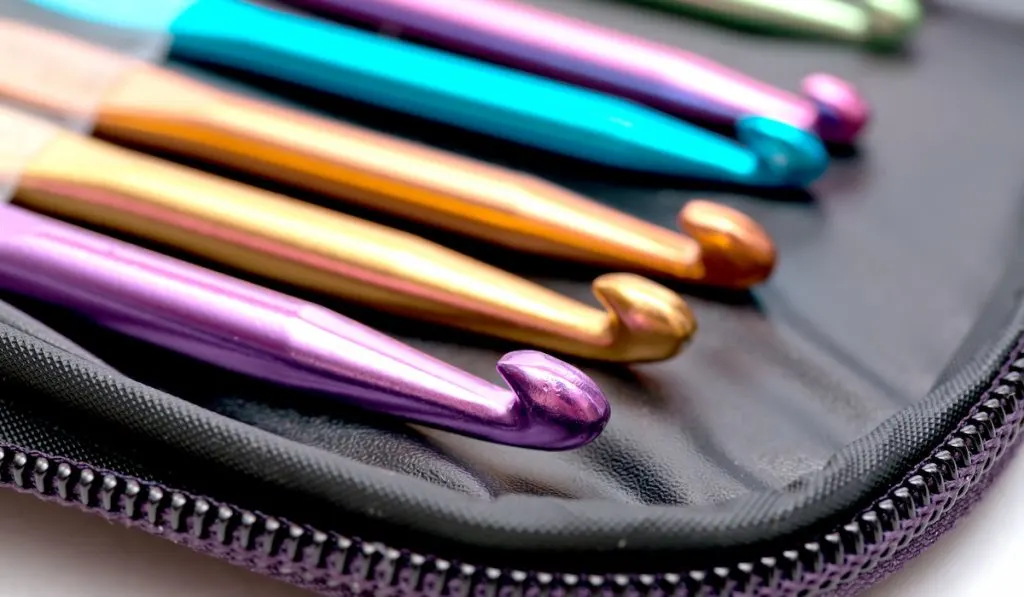Yarn tension is vital to the look and fit of many crochet projects. But it is not uncommon for crocheters to have a tough time achieving the correct yarn tension. So, if you struggle to maintain a suitable yarn tension while crocheting, you are not alone.
So, how do you keep the yarn tension when crocheting?
Holding your yarn and crochet hook in the most comfortable way can help keep the yarn tension when crocheting. Generally, this means having the crochet hook in your preferred hand and the yarn in the other hand. But of course, if another arrangement is more comfortable for you, go with it.
There are many more tips that can help you keep the yarn tension when crocheting. In this post, we will discuss some of these tips.

Steps to Take to Keep Yarn Tension?
As we said earlier, the primary thing you must do to keep the yarn tension when crocheting is to be comfortable. Hold the crochet hook and yarn in the most natural way for you, and the rest should go smoothly.
In so many words, if you are right-handed, hold the hook in your right hand with the yarn in your left hand.
Conversely, if your left hand is dominant, hold the hook in your left hand with your yarn in your right hand.
Besides holding your tools in natural/comfortable positions, you can keep yarn tension by doing the following:
Pull Yarn From the Middle of the Skein
Yarn skeins have two ends – one on the inside (the center of the skein) and one outside. When crocheting, you should pull the yarn with the end at the center of the skein. Doing this will ensure the thread runs through your fingers with ease. This way, you can maintain the yarn tension while working.
If you choose to pull the end on the outside, the skein will bounce while you work. Of course, as the skein bobs around, yarn tension will fluctuate.
Sometimes, you may not be able to easily find the yarn at the center (the inside end). So, when searching, be gentle to avoid yarn barf.
Weave a Crochet Tension Regulator for Yourself
You can sustain yarn tension by working with a crochet tension regulator while crocheting. A crochet tension regulator is a small crochet ring through which the yarn runs while you crochet. It is typically worn on the finger (commonly the index finger).
As you pull the yarn through the stitches of the tension regulator, the tension remains fairly constant so you are less likely to have issues with the appearance and fit of your project.
There are many free crochet tension regulator patterns online; you should be able to find one through a quick search. Once you do, weave yours, and get to crocheting with sustained tension.

Use a Smaller or Larger Hook Size
This fix depends primarily on the tension of your first row and foundation chain. Here’s how it works:
- If the first row and foundation chain are too tight, use a larger hook. Then you may continue the other rows with the hook size recommended for the pattern.
- On the flip side, if the first row and foundation chain are too loose, use a smaller-sized hook. Then for the other rounds, switch back to the recommended hook size.
Wind a Yarn Cake Out of Your Skein
Winding a yarn cake out of your skein is not only attractive, but it can make pulling the yarn easier for you – from inside or outside.
Instead of winding a yarn cake out of your skein, you can make yarns of different colors into one skein. Alternatively, you can weave your skeins into one big skein with your hands.
Work With a Yarn Bowl
Even when you pull the yarn from the middle or wind the skein into a yarn cake, your skein can still bop around. Of course, when your skein bounces around, tension will fluctuate. To prevent this, get a yarn bowl and place your skein in it.
The yarn bowl will restrict the movement of the skein. So, even if it bounces, the effect on yarn tension will be insignificant.

Pay Attention to How Your Yarn Tension Changes With Your Mood
You may not notice it, but your yarn tension can change with your mood. Typically, when you are crocheting to find relief from stress, your stitches may be tight at the start. But as you start feeling easy, the stitches become loose.
So, when you are crocheting under stress, try to adjust for the possibility that your stitches may begin more tightly.
Work With a Beginner-Friendly Yarn
As a beginner, the type of yarn you work with is consequential to your yarn tension. If you crochet with novelty yarns or variegated yarns, you may never really know how to regulate yarn tension.
With those two types of yarns, counting stitches is a bit tough. Also, verifying the consistency of the rows and stitches is hard.
Why Is It Important to Keep Yarn Tension When Crocheting?
Yarn tension may not be important when working on plain-patterned crochet projects like blankets. However, with projects like sweaters, bags, and socks, yarn tension is vital.
Keeping the yarn tension when crocheting is vital because it affects the look and fit of most crochet projects. It works like this: yarn tension affects gauge. In turn, gauge affects the appearance and size of your project.
Gauge is basically the number of stitches or rows per inch of a crochet project produced with a specific hook size.
When trying to replicate a pattern, your gauge must match the gauge of the pattern’s designer. If it doesn’t, your project will look different from the original design, and it won’t fit as it should.
Final Thoughts
You are more likely to keep the yarn tension when crocheting if you hold the crochet hook and yarn comfortably.
But beyond that, keeping your skein restricted, working with an appropriate hook size, and using a beginner-friendly yarn can help you maintain yarn tension.
